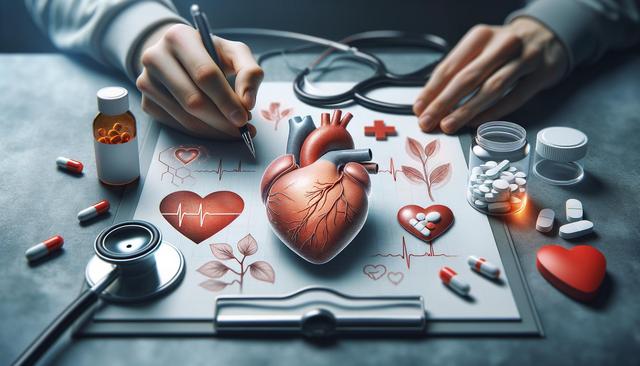Gender Differences in Early Heart Disease Symptoms
The early signs of heart disease can differ significantly between females and males, a factor that often leads to delayed diagnoses. Many women experience subtler symptoms compared to men, which sometimes resemble non-cardiac issues. For example, fatigue, shortness of breath, and sleep disturbances are common early signs of heart disease in females. In contrast, early signs of heart disease in males more frequently include chest discomfort, pain radiating to the arm, and a noticeable decrease in stamina during physical activity.
Recognizing these differences is essential for early intervention. Women may not experience the classic ‘crushing chest pain’ associated with heart attacks, but instead report:
- Unusual fatigue lasting several days
- Anxiety or sleep disturbances
- Indigestion or nausea
Men, on the other hand, are more likely to report:
- Chest pressure or tightness
- Sudden dizziness
- Pain that spreads to the left arm
Understanding these gender-specific symptoms can help individuals seek timely medical advice and potentially avoid major cardiac events.
Recognizing Warning Signs One Month Before a Heart Attack
Many heart attack survivors report experiencing symptoms several weeks before the actual event, making it critical to understand these indicators. The 6 signs of heart attack a month before can include subtle and seemingly unrelated issues such as fatigue, mild chest discomfort, and sleep disturbances. These signs are often overlooked or misattributed to stress or aging.
Key symptoms to watch for include:
- Unexplained fatigue
- Shortness of breath during routine activities
- Disturbances in sleep patterns
- Persistent indigestion or nausea
- Chest discomfort that comes and goes
- Swelling in the legs or ankles
These symptoms may develop gradually and may not feel urgent, which is why they’re often ignored. However, paying attention to these signs and consulting a healthcare provider can lead to early diagnosis and intervention, potentially preventing a full-blown heart attack.
Facial Indicators and Heart Health
Though less commonly discussed, facial signs of heart problems can offer important clues about cardiovascular health. These visual indicators may not be definitive, but they can serve as early warning signs that deserve medical attention.
Some facial signs to be aware of include:
- Blue or gray lips, which may indicate oxygen deficiency
- Swelling in the face, especially around the eyes
- Changes in skin color, such as pallor or redness
- Prominent veins in the neck, which could signal heart failure
These signs are often accompanied by other symptoms like fatigue or shortness of breath. While facial indicators alone are not diagnostic, their presence alongside other symptoms should prompt medical evaluation. Keeping an eye on these subtle changes can serve as an early step toward identifying more serious underlying issues.
Heart Blockage in Females: Symptoms Often Overlooked
Symptoms of heart blockage in females are frequently more subtle than in males, making them harder to diagnose without proper screening. Women are more likely to experience what’s known as microvascular disease, where the small arteries of the heart are affected rather than the main coronary arteries. This can lead to symptoms that are less dramatic but equally dangerous if ignored.
Common signs include:
- Shortness of breath, especially during mild exertion
- Unusual fatigue or weakness
- Mild chest discomfort or pressure
- Lightheadedness or dizziness
These symptoms can mimic other conditions such as anxiety, menopause, or gastrointestinal issues, which complicates diagnosis. It’s essential for women to advocate for themselves and seek cardiac testing if these symptoms persist, even if they seem mild. Early detection can significantly improve quality of life and clinical outcomes.
Understanding the Four Main Types of Heart Disease
Heart disease is not a single condition but a group of disorders affecting the heart in different ways. Understanding the 4 types of heart disease can help individuals recognize specific risks and symptoms related to each type.
The primary types include:
- Coronary artery disease (CAD): Caused by plaque buildup in the arteries, leading to reduced blood flow.
- Heart arrhythmias: Irregular heartbeats that can cause palpitations, dizziness, or even fainting.
- Heart failure: When the heart becomes too weak to pump blood effectively, leading to fatigue and fluid retention.
- Congenital heart defects: Structural issues present at birth that may require lifelong management.
Each type has its own set of symptoms and treatment approaches. For instance, CAD often presents with chest pain and shortness of breath, while heart failure may cause swelling in the legs and rapid weight gain. Being informed about these categories helps in understanding personal health risks and encourages proactive management.
Conclusion: Stay Alert, Stay Informed
Awareness of early and sometimes subtle signs of heart disease can make a life-saving difference. Whether it’s recognizing the early signs of heart disease in females or identifying the 6 signs of heart attack a month before, being informed is the first step toward prevention. Facial signs of heart problems and symptoms of heart blockage in females are often overlooked but can provide crucial early warnings. Understanding the 4 types of heart disease further equips individuals to recognize and respond to potential threats. Regular checkups, a healthy lifestyle, and attentiveness to changes in the body are essential tools in maintaining heart health.




Leave a Reply